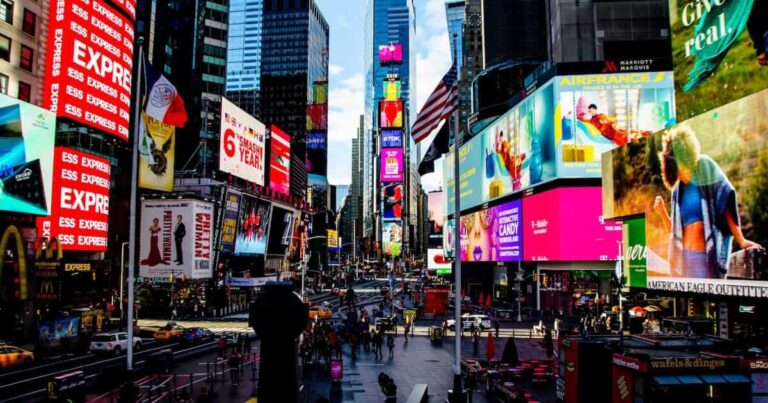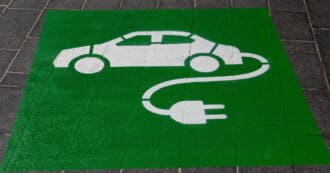By Harry Cooper – The word consumerism may seem like a catchy buzzword that’s hard to understand. But understanding what the term consumerism is and where consumerism examples can be found in the modern world can help us be more aware of the impact of what we buy.
Living in a Consumer Society
In essence, consumerism refers to the idea that purchasing and owning material goods is the key to being happy. While finding happiness and the concept of ownership are typically rooted more in philosophy, consumerism is also very relevant to economics and the ways in which business practices are done. From the economic perspective, mass consumerism leads individuals to spend more money on goods and services which stimulates the market and creates economic growth. However many critics of consumerism argue that this kind of mass consumption exhausts natural resources, creates a tremendous amount of waste disposal, and increases environmental problems at almost every stage in the production process.
The History of Consumerism
Human society has always consumed material goods, but the intense consumer culture that exists today is a relatively new concept. In the late nineteenth and early twentieth centuries, purchasing and owning non-essential goods became a symbol of social status and many philosophers saw consumption as a sign of a countries power and influence; the more stuff people are buying shows how much money people have to spend. This trend died off when World War I, the depression, and World War II caused widespread economic hardship. During this period, instead of valuing the consumption of goods, many people valued frugality and thrift. However, things took a hard turn back in the direction of consumerism when World War II ended.
After the second world war the United States was a very different country than before. Wartime manufacturing and New Deal programs helped pull the the US out of the Great Depression and into a new era of economic plenty. Soldiers returning from war found themselves with new jobs, higher wages, and families to spend their money on. And thus once again, consumer spending became a symbol of social status, affluence, and power.
This new wave of mass consumerism hit American society harder than before. This was mainly due to recovery from the Great Depression, in part relying on stimulating the American economy through consumption, making being a consumer synonymous with being a patriot. Along with this, advances in technology made more new consumer goods available for consumers to buy, such as TVs, cars, washing machines, refrigerators, and vacuum cleaners. Ever since this sharp turn towards consumerism, Americans have only become more deeply ingrained in their consumer identity. Increased wages gave individuals higher spending power which resulted in increasing consumption to unprecedented levels. A consumer revolution happened that created today’s throw-away society characterized by excessive materialism: produce, consume, throw away!
3 Factors That Encouraged Consumerism
Consumers have increased their spending at an alarming rate since the end of World War II, so much so that American savings rates have dropped to below zero. But with the depression having ended over eighty years ago, what has facilitated this strong urge to keep buying? Many people have offered psychological answers to this question.
Self Control and Growing Debt
One of these answers has been a decrease in self control due to new lifestyles. Many psychologists see self control as a muscle that needs to be treated well in order to function properly. When we have little experience with self control or if we are under too much stress to think about whether we actually need something or not, we can find ourselves with less control over our impulses. When companies work towards exploiting this lack of self control, we can find ourselves embracing consumerism and in a lot of debt.
One way in which consumer society has taken advantage of people lacking self control is through the advent of credit cards. Credit cards allow people to buy things on credit and pay it off later which makes it easier for people to give into impulse purchases, and buy stuff in the moment. This system of using consumer credit to buy things is problematic as it often puts people into a lot of debt, and as people get used to not exercising self control when buying stuff on credit, this debt will often only get worse and worse.
More Places to Shop
Just a few decades ago, stores were the only place where people could go to buy things, and once you got home, you were safe from the temptations of consumer spending. However, with the advent of mail order catalogues and TV shopping channels the door was opened for people to spend money on consumer goods not just in a store, but from the comfort of their own home. This made it so that people not only had to resist spending money on goods and services when they’re out and about, but also in their own house. In even more recent years, the internet has allowed for online shopping which enables consumers to purchase goods and services anytime they have access to the internet. Today, consumer choices are unlimited and people spend without thinking twice. This has made the modern age one of the easiest times to buy unnecessary products, and one of the hardest times to save money.
A World of Ads
Advertising has become the backbone of consumerist society. Ads have found their way to every corner of our world, from the street, to the internet, to newspapers, to TV, to anywhere you can stick an image or short phrase. These mass media ads shape consumer behavior by telling us the ways in which a product can change our lives for the better. Ads do this in a very specific way. Firstly, ads often depict an unrealistically ideal life or way of living that sends a message to the viewer that their life is unsatisfactory, or lacking in some way. Ads then associate whatever product their selling to this ideal life, implying that all the consumer needs to be happy and reach this ideal life, is to buy more products and large quantities of products.
While ads only target one or two products, seeing ads for so many different things in so many different places drives home the message that shopping in general is the key to living a good life. As a result, people generally associate happiness to material possession and consumerism. When they realize that the equation does not work, the psychological consequences are huge and have created a population dependent on anti depressants and drugs.
Consumerism and the Environment
Consumerism is very prevalent in our society and has a big impact on the way we live our lives. But what is the big deal? It may seem a little daunting that the corporate world has so much sway on our lives, but if people are happy spending money on consumer goods, why should we change anything? While consumerism may seem like it doesn’t create any amount of extensive harm, the intense extraction of natural resources and massive amounts of waste associated with the consumerist lifestyle cause a lot of environmental pollution.
Exploiting Natural Resources for Consumerism
Every product made requires some amount of resources extracted from the natural world; whether that be wood, water, metal, plastic, oil, or any number of things. As consumption of goods increases, the amount of resources that need to be extracted from the Earth also increases. We can see that this increased extraction of resources is caused by the increase in consumerism as 80% of the world’s resources are being used by 20% of the world’s population, most of these people coming from consumerist societies.
When we extract resources in this way it has grave impacts on the natural world. Certain means of extracting resources, such as deforestation and strip mining, can completely reshape the landscape of the natural world, destroying habitats and completely disrupting ecosystems. Many processes of extracting resources also require the burning of fossil fuels or the use of harmful chemicals. This causes dangerous air and water pollution which can have serious health effects on humans and the environment.
Consumerism Creates Waste
The extraction of resources to create the extra goods demanded in a consumption driven society cause a lot of harm to the environment. However, it’s not just the creation of goods that causes environmental harm, but disposing of used products can also cause serious problems. Consumerism drives people to constantly be buying more and newer products, making many people throw out their old products, creating a massive influx of trash and waste.
This waste often ends up in nature or the ocean which can harm local wildlife. Even if this waste doesn’t end up as litter, it is often transported to landfills where it meets a not much better fate. While landfills help keep waste out of the natural world they often emit methane, carbon dioxide, and other greenhouse gases. Landfills can also leak toxic chemicals into groundwater stores as well as into lakes and rivers. As consumers throw out more and more of the products they buy, more waste is created, and more landfills need to be made.
Examples of Consumerism
Consumerism creates an entire culture around buying and valuing material goods. However, while consumers continue to buy more in general in a consumerist society, there are a few industries that are particularly notorious for promoting consumerism.
The Auto Industry
Ever since their invention, cars have fascinated Americans. Whether its going on a road trip to explore the country or owning a sleek, stylish sports car, cars are a central part of American culture, so it’s no wonder that the automotive industry has taken advantage of the large spike in consumerism that has been happening in the last several decades.
Every year every car company comes out with a new version of every model of car it has. This fits the bill of how consumerism operates: constantly making new products for consumers to buy and replace there old ones with. But while most people don’t buy a new car every year, what is striking about car production, is how excessively harmful it is to the environment.
Not only does driving produce a lot of carbon emissions, but making a car uses a particularly large amount of natural resources. Cars are made up of thousands of parts, many of which come from materials that need to be shipped from all over the world. The actual process of making the car uses massive amounts of energy. It is estimated that when making one car 500kg of carbon dioxide are emitted. The annual mass production of cars to meet consumer demands has made cars one of the more harmful products in a consumerist world.
The Meat Industry
The meat industry is another example of an incredibly popular product that has an exceptionally large impact on the environment. With an increase in fast food restaurants, meat consumption has gone up in recent years, so much so, that livestock animals raised to be eaten now outnumber wild animals by 15 to 1. By using land to accommodate one or two different types of animals in this way, we are decreasing our planets biodiversity and destroying habitats and ecosystems.
Not only does meat production require a lot of land that forces wild life to live in smaller habitats, but meat production is a big contributor to climate change as well. Globally, agriculture produces around a fourth of all greenhouse gas emissions, and within that fourth, meat production specifically contributes about fourteen percent of all greenhouse gas emissions. This is because livestock animals such as cows and pigs produce methane, which is an incredibly potent greenhouse gas.
Consumerism and Religion
Consumerism often manifests as a lack of self-control. It’s easier than ever before to make impulse purchases, spend beyond our means, and buy things we don’t really need.
The need for our self-control to curtail our excessive consumerism is explored in the following excerpt from Eco Bible.
Forbidden Fruit and Self-Control
Genesis 2:17 – but as for the Tree of Knowledge of Good and Bad, You Must Not Eat of It; for as Soon as You Eat of It, You Shall Die.
The need for human self-control is a central message of God telling Adam and Eve not to eat from the Tree of Knowledge of good and evil. As the story plays out, human lack of restraint clearly leads God to expel people from the Garden of Eden, Rabbi Arthur Waskow teaches. Today, lack of moderation and excessive consumerism are driving the widespread degradation of our planet. We are on the verge of self-induced expulsion.
Irresponsible consumerism is destroying our planet. To learn from the mistake of Adam and Eve, we can reflect before we make each purchase, instead of just buying instinctively. By making each purchase mindfully and supplying our basic needs, we can ensure that our spending habits are sustainable for us and the planet alike.
* Featured image source







